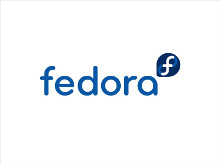Fedora 20 "Heisenbug" goes beta

First things first, what the heck is a Heisenbug? It's not a made-up word. It's programmers' jargon, spun off from Heisenberg's Uncertainty Principle, for "A bug that disappears or alters its behavior when one attempts to probe or isolate it." For Linux users it's also Red Hat's next community Linux, Fedora 20.

After some delays due to bugs, Fedora announced that Fedora 20 is back on track and the beta is now ready for testing. If all goes well, Heisenbug will be released on Dec. 10, 2013.
Of course, as Red Hat notes, "With the beta release, the software is feature complete but may have some bugs. Real-world testing and reports from users are vital to help identify any new or undiscovered bugs so that they can be addressed before wider distribution."
The most likely place to find these bugs is, alas, in Fedora 20's new features. These features include:
Cloud and Virtualization Enhancements:
OS Installer Support for LVM Thin Provisioning – With the introduction of thin provisioning via Logical Volume Manager (LVM) in the Linux kernel, Fedora 20 can now support the configuration of thin clients during operating system installation.
Featured
VM Snapshot UI with virt-manager – While QEMU and libvirt are fully capable of performing safe virtual machine (VM) snapshots/checkpoints, a simple, discoverable UI did not exist. This feature adds a UI to virt-manager to simplify the VM process.
Developer Goodies:
Fedora features a host of new features and updated packages to interest developers using a wide variety of languages, including Ruby on Rails 4.0, Perl 5.18, and GNU C Library 2.18.
Maturity/Advanced Features:
NetworkManager Improvements – Users can now add, edit, delete, activate and de-activate network connections via the nmcli command line tool. And support for bonding and bridging interfaces is now included, improving usability for enterprise and virtualization users.
No Default Sendmail, Syslog – As systemd continues to mature, the systemd journal now takes its place as the default logging solution in place of syslog, while Sendmail is no longer installed by default.
Speaking for myself, and as someone who cut his teeth on Sendmail back in the day when I was an e-mail administrator, I'm sorry to see that it will no longer be installed by default. Still, it's there in the repositories if you want it.
For desktop users, Fedora is still using the X Window System instead of its new Wayland display server. There will be an experimental version of Wayland in Fedora 20, which will support the GNOME desktop, but the final version of Wayland won't appear until Fedora 21 ships in 2014. In either case, the primary Heisenbug desktop will be GNOME 3.10.
On top of all this, Fedora has made ARM a primary architecture. While Fedora has supported numerous hardware architectures over the years, with x86/x86_64 used by a majority of Fedora users, the ARM team has made massive strides over the past year. Since ARM already dominates the mobile market and shows great promise for servers, this is a smart world.
Ready to give it a try? You can download Fedora 20 now. Before installing it make sure you check the beta release notes and the common Fedora 20 bugs page so you can avoid any unpleasant surprises.
Related Stories: